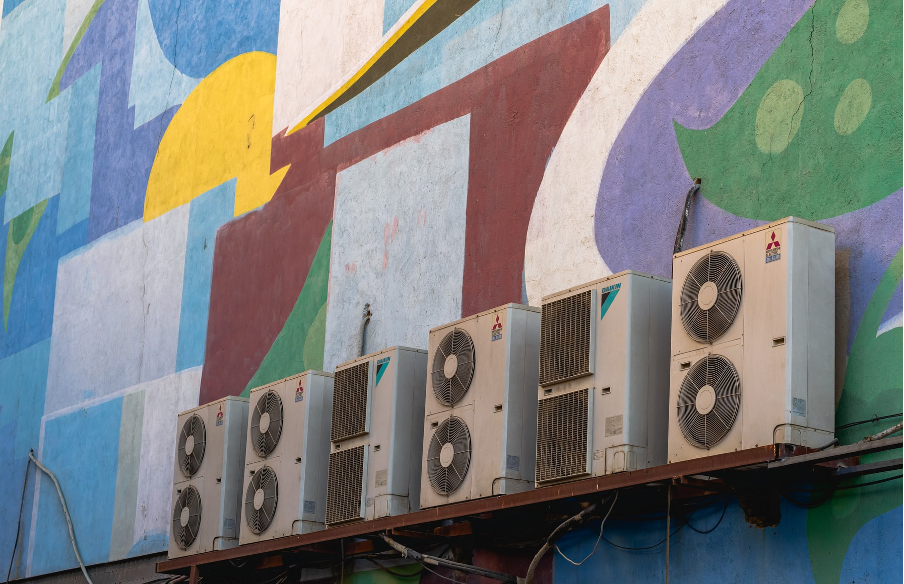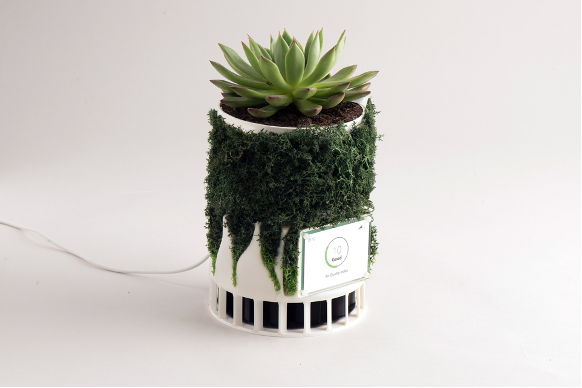
A public health issue
According to the EPA (The US Environmental Protection Agency), indoor air quality is on average two to five times higher in pollutants than outdoors. Meanwhile, WHO estimates that indoor air pollution is responsible for around 3.8 million deaths per year. It mainly affects the poorest, as 40% of the world’s population does not have access to clean cooking fuels and technologies in their homes. It also concerns how we build and maintain our buildings. It is estimated that 30% of new or old buildings in the US could be the cause of Sick Building Syndrome (SBS), a chronic disease caused by poor indoor air quality.
Numerous contributing factors
There are numerous sources of pollution, as well as various different kinds. The Observatoire de la Qualité de l’Air Intérieur (OQAI, the French Indoor Air Quality Observatory) has identified three main types: chemical (volatile or semi-volatile organic compounds, or VOCs and COSVs respectively), biological (viruses, bacteria, moulds, allergens from domestic animals, dust mites) and physical (particles, asbestos fibres, artificial mineral fibres, radon, electromagnetic fields). It has also outlined three main sources: external pollution, building constituents (materials, protective coatings, heating systems, furniture, office equipment) and finally activities carried out by occupants (smoking, cleaning, DIY, hygiene activities, use of insecticides)
Targeted solutions through impact measurement
Faced with this complex problem, most solutions have taken the issue of impact measurement as the starting point. Dutch startup Clairify recently raised €565k to expand its sensor and data analytics solution. Meanwhile, Airthinx offers a whole range of indoor air quality monitoring solutions, connects with ventilation solutions and even integrates predictive services. And the Canadian company HAVEN is developing a device that can be installed directly onto ventilation equipment to automate air quality management. In the wake of Covid-19, Phylagen is focusing on the indoor “microbiome” of office spaces. At Urescys, which recently raised $7M, the solution comes from outside: The relatively new Israeli start-up can predict indoor pollution levels using outdoor pollution data and meteorological data. And for the fun final touch, the Kickstarter-financed Canairi is a device featuring a little yellow bird which drops down when CO2 levels are high, reminding you to open the windows!
Purification solutions still ineffective
Apart from measuring pollution levels, solutions can be summed up into three main categories: limiting pollutants (purchasing virtuous products, moderate use of candles and incense), ventilation (regular ventilation, HVAC optimisation) and purification (plasma technology, catalysis and photocatalysis, ozonation and ionization). The latter category is currently delivering the most experimental solutions. Take the IRINA room (Innovative Room for Indoor Air studies) at IMT Lille Douai, which is testing “pollution sink” materials for their ability to demonstrate their effectiveness and harmlessness. While back in 2017, ANSES (the French Agency for Food, Environmental and Occupational Health & Safety) published its unequivocal opinion: “The available data were unable to demonstrate the effectiveness and safety in real conditions of use of the indoor air purification devices based on these technologies.”
The promises of biophilic depollution
In 1989, the NASA Clean Air Study was already testing the ability of certain plants to clean up sealed environments. Biophilic solutions are increasingly in the spotlight today. In Hong Kong, Bravolinear creates connected green walls which feature a combination of 22 different plant species for optimal pollutant capture. With the OLUS prototype, designed by Louie Duncan, and Italian startup Vitesy, which recently raised €2.6 million to develop its connected flower pots, new forms of interior furniture are now being developed.

Local authorities getting in on the action
Legal and administrative frameworks are still being created to tackle this type of pollution that was, up until now, rarely talked about. In France, air quality monitoring is compulsory in certain public establishments (nurseries, schools, high schools). French MP Jean-Luc Fugit has tabled a bill to make an “indoor air quality performance diagnosis” mandatory, based on the EPC model. ANSES has also implemented a mandatory labelling process of building and decoration products according to their VOC emissions. In the US, the country is taking on board the Clean Air In Buildings Challenge in order to support best practices. As for South Korea, the government is taking the issue very seriously by implementing a “Five-Year Plan for Indoor Air Quality Management”, as well as a “Construction Standard for Healthy Housing” which encompasses the use of low-emitting materials, ventilation rate management, and the use of VOC-absorbing materials.


